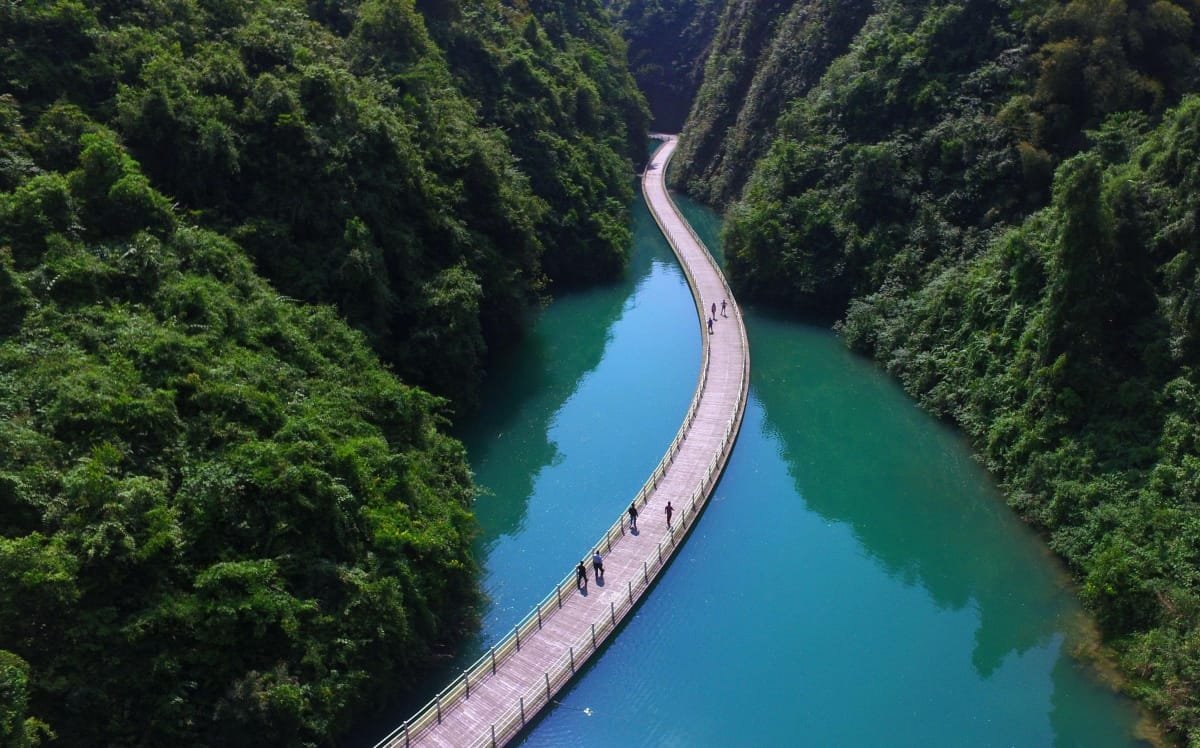Enshi, Hubei Province, China – September 3, 2025, 11:09 PM IST – Nestled in the picturesque Enshi Tujia and Miao Autonomous Prefecture, the Shiziguan Floating Bridge, often dubbed the “Bridge of Dreams,” continues to captivate and divide opinions as a striking testament to Chinese engineering ingenuity. Spanning the Qingjiang River, this innovative structure has become a major tourist attraction since its opening in 2016, yet recent developments have thrust it into the spotlight for reasons beyond its scenic allure—safety and structural integrity.
A Unique Engineering Feat
The Shiziguan Floating Bridge stretches approximately 400 to 500 meters, depending on varying reports, and is designed to support vehicles weighing up to 2.8 tons, alongside pedestrian traffic. Constructed using advanced German anti-rollover technology, the bridge relies on high-density polyethylene floats filled with water to ensure stability. This unique pontoon system allows it to gently sway with the river’s currents, offering a surreal driving or walking experience at a regulated speed limit of 20 km/h. Surrounded by lush green mountains and crystal-clear turquoise waters, the bridge provides a breathtaking backdrop that draws thousands of visitors annually, blending modern innovation with the region’s natural beauty.
The concept echoes ancient Chinese traditions of pontoon bridges, updated with contemporary materials and engineering to create a functional yet visually stunning landmark. Its narrow, one-way design accommodates both vehicular and foot traffic, making it a rare hybrid structure that symbolizes human adaptability to challenging terrains.
A Tragic Turning Point
Despite its acclaim, the bridge’s safety record took a devastating hit in 2023 when a multi-purpose vehicle carrying eight passengers crashed through its railing and plunged into the Qingjiang River. The accident, captured on security footage showing the vehicle swaying violently before breaking through, resulted in five fatalities, with three survivors managing to swim to safety. Local authorities temporarily closed the bridge for an extensive safety review, sparking debates about its design and load-bearing capacity.
Investigations into the incident pointed to potential violations of weight or speed limits, though the exact cause remains inconclusive. The bridge reopened after enhancements, but the tragedy has left a lasting impact, prompting visitors and experts to question whether the structure’s aesthetic appeal outweighs its practical risks.
Current Status and Visitor Experience
As of 2025, the Shiziguan Floating Bridge remains operational, continuing to attract tourists eager to experience the sensation of driving or walking on water. Recent visitor feedback highlights the bridge’s charm, with many describing the gentle motion as a thrilling yet serene adventure. However, safety measures have been tightened, including stricter enforcement of the weight and speed restrictions, and regular inspections to ensure structural integrity.
Local tourism officials emphasize the bridge’s economic benefits, noting that it has boosted the region’s profile and supported small businesses catering to visitors. Yet, some residents and online commentators express unease, with social media posts on platforms like X reflecting mixed sentiments—ranging from awe at its beauty to calls for more robust safety upgrades.
Challenges and Future Outlook
The bridge’s design, while innovative, poses inherent challenges. Its reliance on floating pontoons makes it susceptible to river conditions, and experts suggest that extreme weather or human error could again test its limits. Environmental concerns have also emerged, with critics arguing that vehicular traffic introduces pollutants like tire microplastics into the sensitive ecosystem, a point raised in discussions following the 2023 accident.
Looking ahead, authorities are considering long-term solutions, including potential restrictions on vehicle use to limit environmental impact and enhance safety. Proposals for pedestrian-only access have gained traction, though such changes could alter the bridge’s identity and economic role. Engineers are also exploring reinforcements to withstand heavier loads or more intense weather patterns, influenced by climate change forecasts for the region.
A Symbol of Innovation and Caution
The Shiziguan Floating Bridge stands as a bold experiment in modern infrastructure, marrying tradition with technology. Its ability to withstand scrutiny and adapt to past lessons will determine its legacy. As tourists continue to flock to this engineering marvel, the balance between safety, sustainability, and allure remains a critical focus for China’s planners. For now, the “Bridge of Dreams” serves as both a point of pride and a reminder of the delicate line between human achievement and nature’s unpredictability.


Average Rating